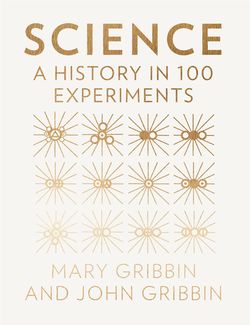Читать книгу Science: A History in 100 Experiments - John Gribbin - Страница 14
Оглавление| No. 9 | RESISTING THE SQUEEZE |
Following the experiments of Torricelli, Pascal, and his brother-in-law, the study of the vacuum became one of the hottest topics in science. In order to investigate this phenomenon, scientists needed very efficient pumps that could suck air out of glass bottles and other vessels. These pumps were hi-tech by the standard of the day – the seventeenth-century equivalent of modern particle accelerators such as the Large Hadron Collider. The very best air pumps available in the 1660s were made by the British scientist Robert Hooke, who was working at the time as an assistant to Robert Boyle. Boyle was a pioneering scientist (he helped to found the Royal Society) inspired by the work of Galileo, and once said that in investigating the world ‘we assent to experience, even when its information seems contrary to reason’.
© Royal Astronomical Society/Science Photo Library
Robert Boyle’s experiment to demonstrate the greatest height to which water could be raised by pumping. Boyle stood on a roof approximately 10 metres above a barrel of water and used a pump to suck water from the barrel up a pipe. From ‘A continuation of new experiments physico-mechanical, touching the spring and weight of the air, and their effects’, by Robert Boyle (1669).
Hooke’s design for a vacuum pump was based upon a cylinder with one end closed, containing a piston that stuck out from the open end of the cylinder. The end of the piston was cut with teeth which engaged with a gear wheel that could be wound with a handle to push the piston up, forcing air out through a one-way valve, then pull the piston down, leaving a vacuum in the tube (there is a replica of Hooke’s pump in the Science Museum in London). When a glass vessel was attached to the pump via another one-way valve, the piston could be pumped up and down repeatedly, sucking more and more air out of the glass vessel.
At about the time Hooke was developing his pump, in the late 1650s, another Englishman, Richard Towneley, was repeating the experiments carried out by Florin Périer, using a Torricelli barometer, on Pendle Hill in Lancashire. He surmised that the lower pressure of air at higher altitude is because the air is thinner (less dense) there, and mentioned this idea, which became known as Towneley’s Hypothesis, to Boyle. Boyle was intrigued, and gave Hooke the task of carrying out experiments to test the hypothesis.
The simplest of these experiments did not involve the air pump. Hooke took a glass tube shaped like the letter J, with the top open and the short end closed. He poured mercury into the tube to fill the U-bend at the bottom (just like the U-bend in a kitchen sink), sealing off the air trapped in the short arm of the J. When the mercury was at the same level on both sides of the U-bend, it meant that the trapped air was at atmospheric pressure. But when more mercury was poured in to the tube, because of its extra weight the pressure increased and forced the air in the closed end into a smaller space. Boyle was not a great one for calculations, but Hooke was, and he made careful measurements of the amount of mercury being added and the amount by which the trapped air was squeezed, which showed that the volume of the trapped air was inversely proportional to the pressure. In other words, if the pressure doubles, the volume is halved; if the pressure triples, the air is squeezed into a third of its original volume, and so on.
Other experiments carried out by Boyle and Hooke did use the air pump, and showed, for example, that water boils at a lower temperature when the air pressure is reduced (which explains why it is hard to make a good cup of tea on top of a mountain). This was a very tricky experiment, as it involved placing a mercury barometer inside a sealed glass vessel where the water was being heated, to monitor the pressure as air was pumped out.
The experimental results were first announced to the world in Boyle’s book, New Experiments Physico-Mechanical Touching the Spring of the Air, published in 1660. But at that time he did not explicitly spell out the inverse law relating volume and pressure. That appeared in the second edition of his book, published in 1662, and as a result it became known as Boyle’s Law, even though Hooke had done the experiments and made the calculations on which the law was based.
All of this was important to scientific thinking, because it supported the idea that the air is made of atoms and molecules, flying around and colliding with one another. It was also important in practical terms, because the realization that air has weight, and that it can be extracted using pistons to leave a vacuum, fed directly into the idea of the steam engine (see here).
